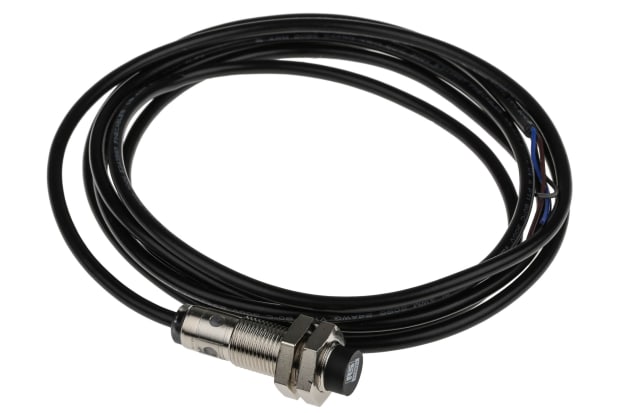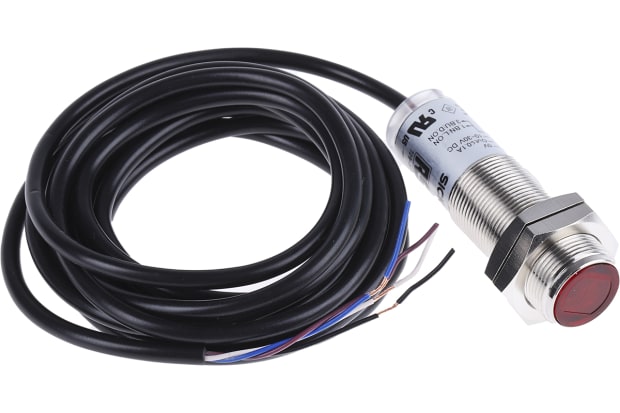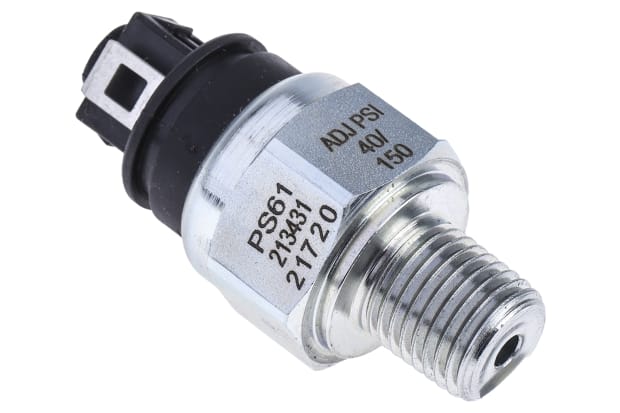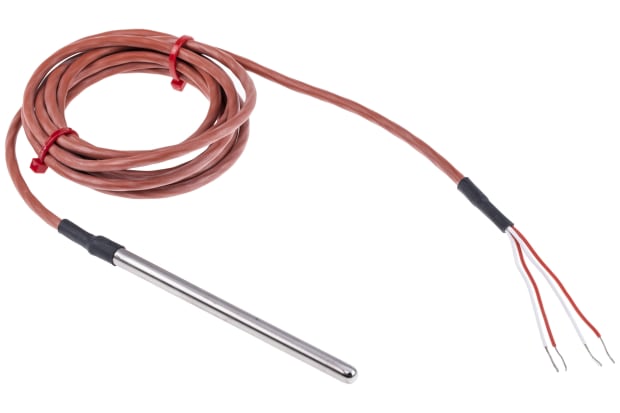- Published 30 Jan 2023
- Last Modified 29 Aug 2023
- 9 min
Industrial Sensors Overview
From the RFID chip to the hygrometer – this is how you choose the right sensor.

Published February 2022
Thanks to semiconductors, even the smallest devices can be equipped with accelerometers, motion sensors, and capacitive touchscreens that make using smartphones and tablets easier than ever before.
However, proximity sensors and switches are also essential in industrial environments and processes. They not only ensure the safety of the machines but also of the people who operate them.
What are Sensors?
The term ‘sensor’ typically refers to any technical component that independently detects certain physical or chemical parameters or properties of either objects or the environment. For example, this could include temperature, brightness, or acceleration.
In this sense, they resemble our own sensory organs, with the key difference being that they can register things that would otherwise remain invisible or hazardous to humans.
An important property of sensors is the ability to convert measurement data into signals or visual displays. These can then be meaningfully interpreted by either an operator or an electronic device.
In other words, a sensor is also always a transducer – a device that converts one form of energy or stimulus into another.
Functions & Types of Sensors
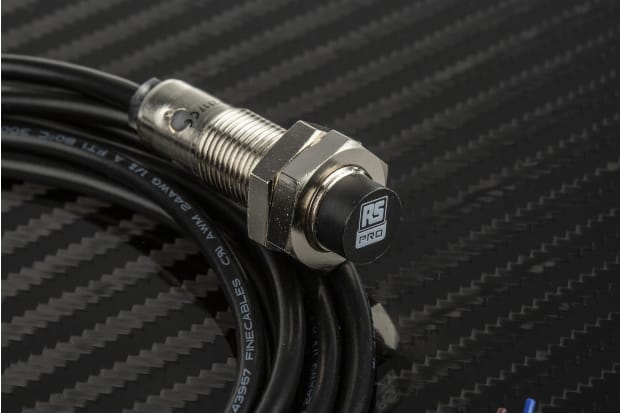
The key function common to all sensors is conversion. They detect and measure physical objects or quantities, which can be as diverse as:
- An electronic identification code on a specially designed label known as an RFID (Radio Frequency Identification) chip
- The quantity of heat in an object, fluid, or person
- The movement of an object, person, or animal into an electronically monitored field of vision
- The type of acceleration an object is undergoing, such as free-fall or rotation
A motion sensor, for example, can be integrated into industrial machinery and wired to a safety switch. This provides safe shutdown in the event of the detector signalling an abnormal mechanical movement to the switch which, if it were permitted to continue, may damage the equipment, or pose a danger to nearby operatives.
This is an example of measurement being converted into a signal for input into another non-human device, but of course, many sensor-based systems convert the measurements into scales or displays intended for a human operator.
The mercury-in-glass thermometer, for instance, is a familiar form of temperature sensor which converts the expansion or contraction of a small mercury bulb into a readable scale (Celsius or Fahrenheit). As the mercury expands or contracts, it rises or falls inside a narrow, hollow filament within the glass, which has a calibrated temperature scale engraved on its outer surface.
Within the temperature ranges it is designed to measure, the thermometer displays an important feature required of all sensors – linearity. In other words, the physical changes in the detector material – in this case, mercury – are directly proportional to changes in the object, force, movement, or radiation being measured.
Another type of sensor, the thermocouple, will similarly respond to temperature changes in a linear fashion, in this case generating changes in output voltage that are proportional to changes in heat. To ensure accuracy, sensors are carefully calibrated to conform to established, tried-and-tested scales.
In today’s electronics-oriented world, sensors play a pivotal role in ensuring the proper functioning of a vast number of machines, gadgets, vehicles, and manufacturing processes. Sensor technologies are behind a vast number of day-to-day items, such as the accelerometer, which ensures that the display on a mobile phone is always the right way up no matter how the device is moved or rotated. They are widely used in medical equipment, aerospace engineering, automotive safety, robotics, and innumerable manufacturing processes.
Sensitivity
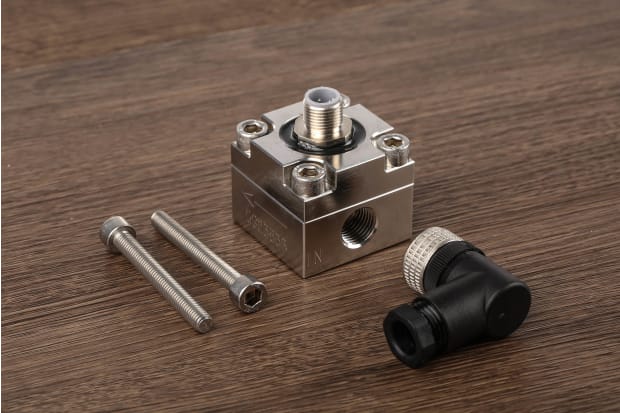
Sensitivity is the characteristic that determines many sensor applications. When a sensor responds to a relatively large change in a medium with a relatively small change in its detector material and consequent output, it is said to have low sensitivity. However, they are sometimes required to measure tiny changes, in which case they must exhibit high sensitivity, responding to minute changes in the medium being measured. Often, the linearity is confined to a tightly delimited range, beyond which they will respond with far less accuracy.
Sensor manufacturers must also consider the effect a sensor will have on what it is measuring or detecting. For instance, immersing the bulb of a mercury thermometer into hot water will cool the liquid, because the thermometer will absorb heat energy from the medium it is immersed in.
A certain degree of sensor impact is inevitable in most situations, but care should be taken to ensure the effect is minimised wherever possible. One solution is to aim for as much miniaturisation as possible in sensor design. The smaller a sensor is physically, the less physical impact it will have on its medium.
Microelectromechanical Systems (MEMS) technology is transforming sensor manufacturing, enabling the construction of micro-detectors that are microscopic in scale. These sensors are typically faster in their response times and considerably more sensitive than their larger counterparts.
Technical Illustration of How Sensors Work
Sensors come in all shapes and sizes and can be used to measure a wide range of mediums and characteristics. The different types include hygrometers and moisture meters (for measuring moisture), gyroscopes (for measuring rotation), current or voltage sensors, pressure sensors, position sensors, level sensors and flow sensors (for fluid management).
Some of the most common sensor types are explained in more detail in the content below:
RFID chip
Versions :
- Passive (receiving an interrogation signal from an RFID reader); battery-operated active (transmitting ID signal at set intervals)
What it Detects :
- The RFID chip reacts to an incoming interrogation signal from an RFID reader
Description :
- RFID chips can store simple, electronically coded data such as a single serial number or more complex product descriptions, which can be detected and displayed with an RFID reader
Temperature sensor
Versions :
- Thermometers, thermocouples, and resistance temperature detectors (RTDs), each of which may be contact or non-contact sensors
What it Detects :
- Changes in heat energy in an object or medium, either by the expansion and contraction of physical material or by changes in the electrical conductivity of a conductor
Description :
- Different temperature sensors are designed to be applied in varying heat environments. Some, like thermocouples and RTDs, remain sensitive and high-precision at very high temperatures while others, like many thermometers, are sensitive at lower temperatures
Accelerometer
Versions :
- Piezoelectric, piezoresistive, magnetoresistive, hall effect, heat transfer, capacitative
What it Detects :
- Accelerative motion caused by vibration, rotation, tilt, gravity, free-fall, or collision. Changes in the deflection of a spring-loaded proof load within the sensor in response to accelerative forces
Description :
- Proof load deflection is converted by the sensor into a measure of the accelerative force that has caused it. The sensor also considers the plane in which the acceleration occurs
Infrared sensor
Versions :
- Passive (receiving infrared thermal emissions from an object); active (emitting IR via an LED or IR laser)
What it Detects :
- Infrared radiation in the wavelength range 0.7 - 14µ
Description :
- PIR sensors detect radiation below the wavelength of visible red light, which is essentially heat radiation. They may be used to convert the IR radiation into images as in IR cameras, or as part of security systems to detect the presence of moving intruders
Motion sensor
Versions :
- Local sensing (visible IR light beam from LED or laser, piezoelectric, piezoresistive, contact switch); area sensing (video, active or PIR sensor, ultrasonic motion detector, microwave Doppler sensor)
What it Detects :
- Motion by objects, humans, or animals
Description :
- Motion sensors convert motion in a designated area or field of view into an electrical signal, which can then function as an input to various applications and sensor systems such as security, light automation, automatic doors, and safety shutdown switches in machinery
Industrial Sensors in Manufacturing
In engineering, sensor solutions are used in the most ingenious ways to improve efficiency and reduce labour costs. For example, RFID sensors have not only helped to create cardless payment systems when integrated into smartphones but have also greatly simplified security procedures. This is achieved by enabling the automation of gate and door opening systems in secure areas when the required RFID chip is presented. They have also helped to revolutionise logistics and transportation, as well as cross-docking processes.
Industrial sensing solutions are used in many different types of applications, as detailed below:
- Accelerometer sensors are not only used to auto-rotate device displays. They are also widely used in the navigation systems of modern aerospace equipment
- Infrared sensors are often built into heavy machinery and electrical equipment, where they activate safe shutdown in the event of abnormal and potentially dangerous temperatures
- Infrared sensors (and thermal imaging cameras) are also used for preventive maintenance
- Motion sensors, when wired to shutdown switches, perform a similar function by detecting potentially hazardous movement in mechanical parts. This may suggest faults such as worn bearings, which could have significant cost implications if not deactivated swiftly
- Motion sensors are also widely used in commercial security systems for intruder detection
- Temperature sensors such as thermocouples are regularly used in chemical engineering plants. They can withstand very high temperatures and are ideal for monitoring small heat changes indicative of chemical reactions. The developing field of nanothermometry has enabled the measurement of temperature differentials between nanometre-sized particles
- Photoelectric sensors are used to detect solid objects with one-way light barriers in freight elevators, for example
- State-of-the-art smart sensors are indispensable in industrial automation and IoT applications
Product Spotlight
Proximity Sensor
RS PRO M12 Inductive Proximity Sensor - Barrel - PNP Normally Open - 4mm Detection Range - IP67
Photoelectric Sensor
RS PRO Retroreflective Photoelectric Sensor - Barrel Sensor - 7m Detection Range - PNP Output
Pressure Sensor
Gems Sensors Pressure Switch for Hydraulic - 10bar Max Reading - SPST-NC - 0.17 bar Accuracy
RTD Sensor
RS PRO PT100 RTD Sensor - 6mm Diameter - 4-Wire; Probe - Class B +200°C Max
